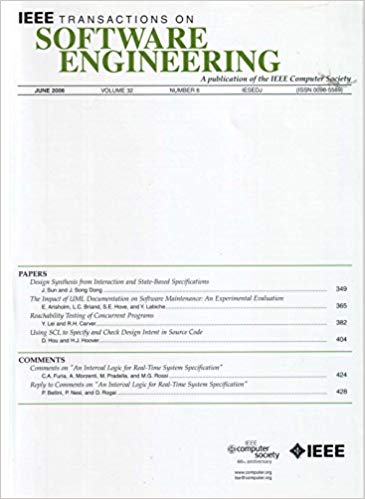AFLNet Five Years Later: On Coverage-Guided Protocol Fuzzing
IF 6.5
1区 计算机科学
Q1 COMPUTER SCIENCE, SOFTWARE ENGINEERING
引用次数: 0
Abstract
Protocol implementations are stateful which makes them difficult to test: Sending the same test input message twice might yield a different response every time. Our proposal to consider a sequence of messages as a seed for coverage-directed greybox fuzzing, to associate each message with the corresponding protocol state, and to maximize the coverage of both the state space and the code was first published in 2020 in a short tool demonstration paper. AFLNet was the first code- and state-coverage-guided protocol fuzzer; it used the response code as an indicator of the current protocol state. Over the past five years, the tool paper has gathered hundreds of citations, the code repository was forked almost 200 times and has seen over thirty pull requests from practitioners and researchers, and our initial proposal has been improved upon in many significant ways. In this paper, we first provide an extended discussion and a full empirical evaluation of the technical contributions of AFLNet and then reflect on the impact that our approach and our tool had in the past five years, on both the research and the practice of protocol fuzzing.AFLNet五年后:关于覆盖引导协议模糊测试
协议实现是有状态的,这使得它们难以测试:两次发送相同的测试输入消息可能每次都会产生不同的响应。我们的建议是将消息序列作为覆盖导向灰盒模糊测试的种子,将每个消息与相应的协议状态关联起来,并最大化状态空间和代码的覆盖,该建议于2020年首次发表在一篇简短的工具演示论文中。AFLNet是第一个以代码和状态覆盖为导向的协议模糊器;它使用响应码作为当前协议状态的指示器。在过去的五年中,该工具文件已经收集了数百次引用,代码存储库被分叉了近200次,并且已经看到了来自从业者和研究人员的30多个pull请求,并且我们最初的建议已经在许多重要的方面得到了改进。在本文中,我们首先对AFLNet的技术贡献进行了扩展讨论和全面的实证评估,然后反思了我们的方法和工具在过去五年中对协议模糊测试的研究和实践的影响。
本文章由计算机程序翻译,如有差异,请以英文原文为准。
求助全文
约1分钟内获得全文
求助全文
来源期刊

IEEE Transactions on Software Engineering
工程技术-工程:电子与电气
CiteScore
9.70
自引率
10.80%
发文量
724
审稿时长
6 months
期刊介绍:
IEEE Transactions on Software Engineering seeks contributions comprising well-defined theoretical results and empirical studies with potential impacts on software construction, analysis, or management. The scope of this Transactions extends from fundamental mechanisms to the development of principles and their application in specific environments. Specific topic areas include:
a) Development and maintenance methods and models: Techniques and principles for specifying, designing, and implementing software systems, encompassing notations and process models.
b) Assessment methods: Software tests, validation, reliability models, test and diagnosis procedures, software redundancy, design for error control, and measurements and evaluation of process and product aspects.
c) Software project management: Productivity factors, cost models, schedule and organizational issues, and standards.
d) Tools and environments: Specific tools, integrated tool environments, associated architectures, databases, and parallel and distributed processing issues.
e) System issues: Hardware-software trade-offs.
f) State-of-the-art surveys: Syntheses and comprehensive reviews of the historical development within specific areas of interest.
 求助内容:
求助内容: 应助结果提醒方式:
应助结果提醒方式:


